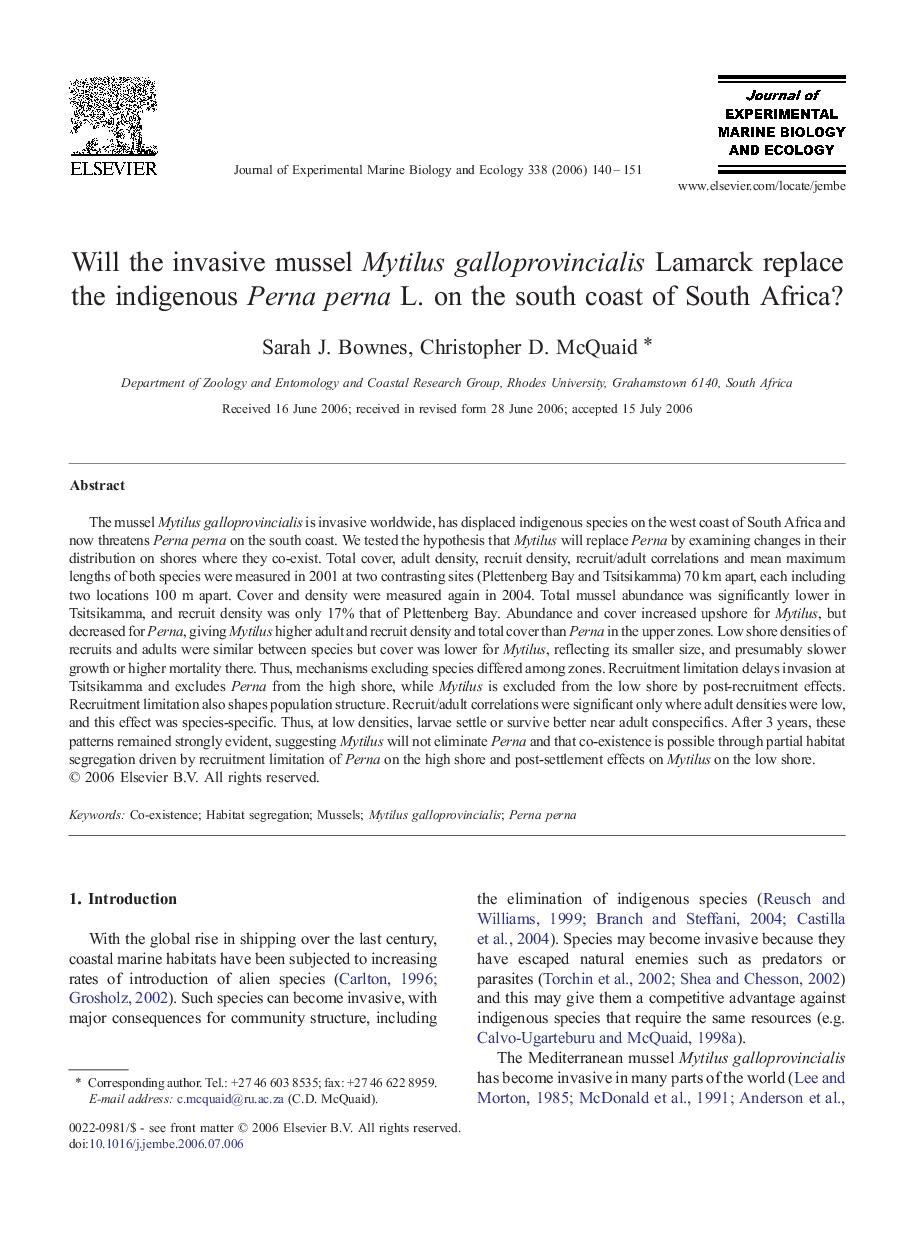| کد مقاله | کد نشریه | سال انتشار | مقاله انگلیسی | نسخه تمام متن |
|---|---|---|---|---|
| 4397896 | 1305912 | 2006 | 12 صفحه PDF | دانلود رایگان |

The mussel Mytilus galloprovincialis is invasive worldwide, has displaced indigenous species on the west coast of South Africa and now threatens Perna perna on the south coast. We tested the hypothesis that Mytilus will replace Perna by examining changes in their distribution on shores where they co-exist. Total cover, adult density, recruit density, recruit/adult correlations and mean maximum lengths of both species were measured in 2001 at two contrasting sites (Plettenberg Bay and Tsitsikamma) 70 km apart, each including two locations 100 m apart. Cover and density were measured again in 2004. Total mussel abundance was significantly lower in Tsitsikamma, and recruit density was only 17% that of Plettenberg Bay. Abundance and cover increased upshore for Mytilus, but decreased for Perna, giving Mytilus higher adult and recruit density and total cover than Perna in the upper zones. Low shore densities of recruits and adults were similar between species but cover was lower for Mytilus, reflecting its smaller size, and presumably slower growth or higher mortality there. Thus, mechanisms excluding species differed among zones. Recruitment limitation delays invasion at Tsitsikamma and excludes Perna from the high shore, while Mytilus is excluded from the low shore by post-recruitment effects. Recruitment limitation also shapes population structure. Recruit/adult correlations were significant only where adult densities were low, and this effect was species-specific. Thus, at low densities, larvae settle or survive better near adult conspecifics. After 3 years, these patterns remained strongly evident, suggesting Mytilus will not eliminate Perna and that co-existence is possible through partial habitat segregation driven by recruitment limitation of Perna on the high shore and post-settlement effects on Mytilus on the low shore.
Journal: Journal of Experimental Marine Biology and Ecology - Volume 338, Issue 1, 24 October 2006, Pages 140–151